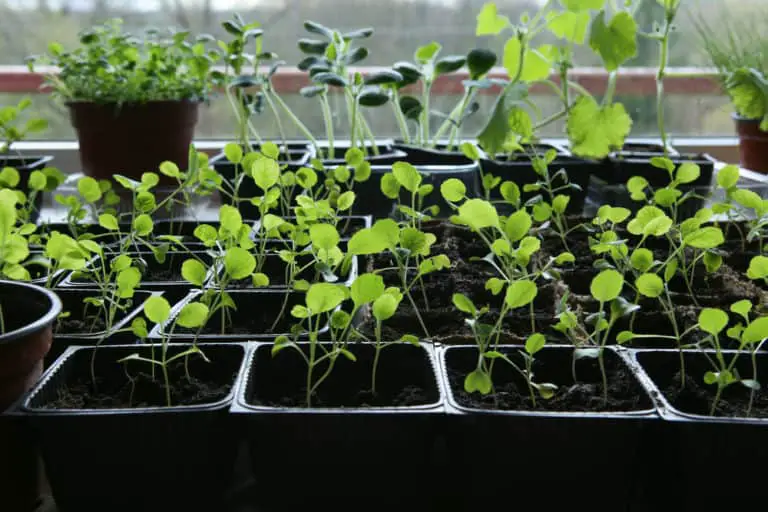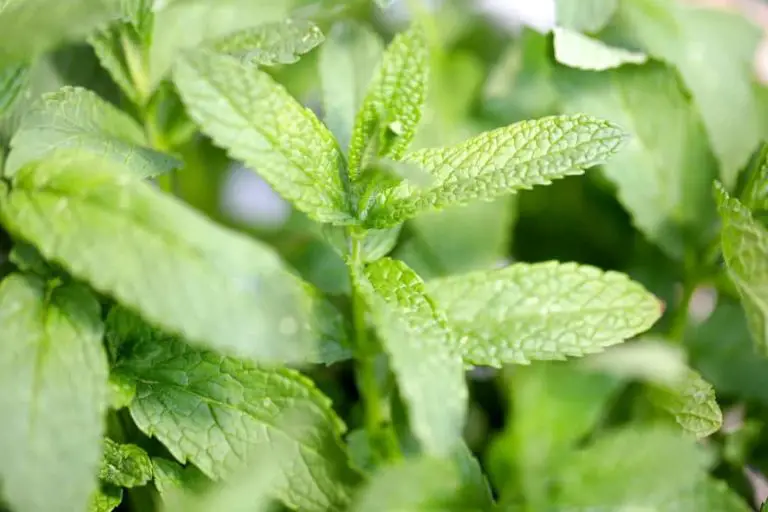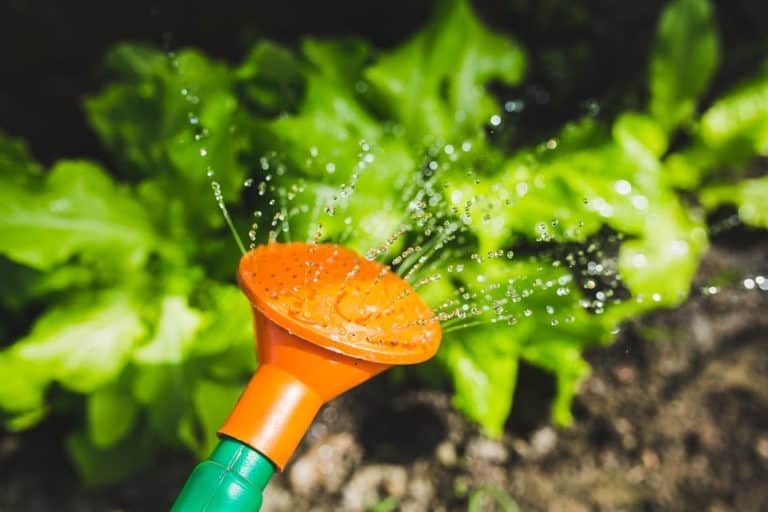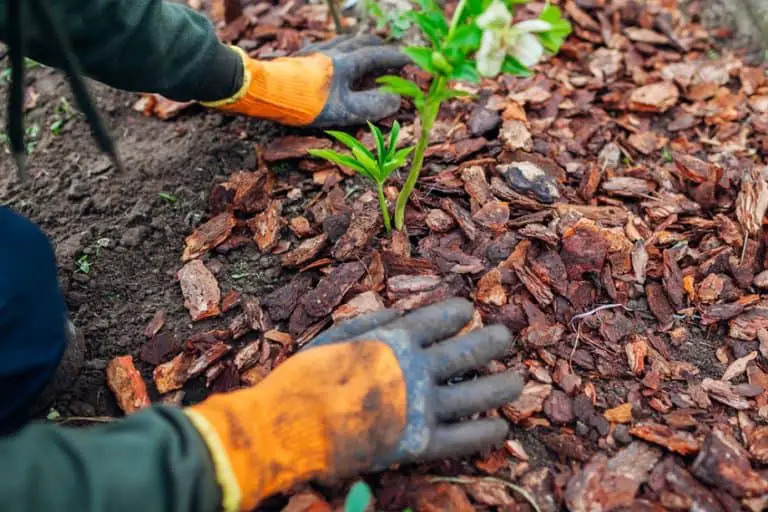How Often To Water Pansies (You Need to Get This Right)
Growing pansies is not an easy task as they require high maintenance. They’re short-lived, biennial plants that look adorable and fit right into your garden or window sill or front door entrance. They’re beautiful hybrids that flower in multicolor and come in a wide variety of shades. But you must learn to take good care of them to keep them bright, vibrant, and thriving!
So let’s take you through all the knowledge you need to water your beautiful pansies ideally.
Contents
How often to Water your Pansies
Pansies require one inch of water per week when they are actively growing and healthy. However, be warned, excess water in the soil will cause Edema in pansies.
Edema is a condition in which the soil becomes so soggy that the plant’s roots can’t breathe. Roots absorb their oxygen requirements from the air spaces inside the soil. They can’t do that when the soil is waterlogged, in the case of heavy rainfall or excessive watering. The roots are unable to take in any oxygen or nutrients in this condition.
Edema is the common cause for many unsuccessful pansy gardening attempts. That means that you water them too much! Avoid making this mistake by looking out for signs that indicate the symptoms of Edema, such as discoloration, stunted growth, drying leaves, and wilting. No oxygen or nutrients to your pansies means that the plant is dying.
Remember, one inch of water per week is the way to go!
How to Water Pansies
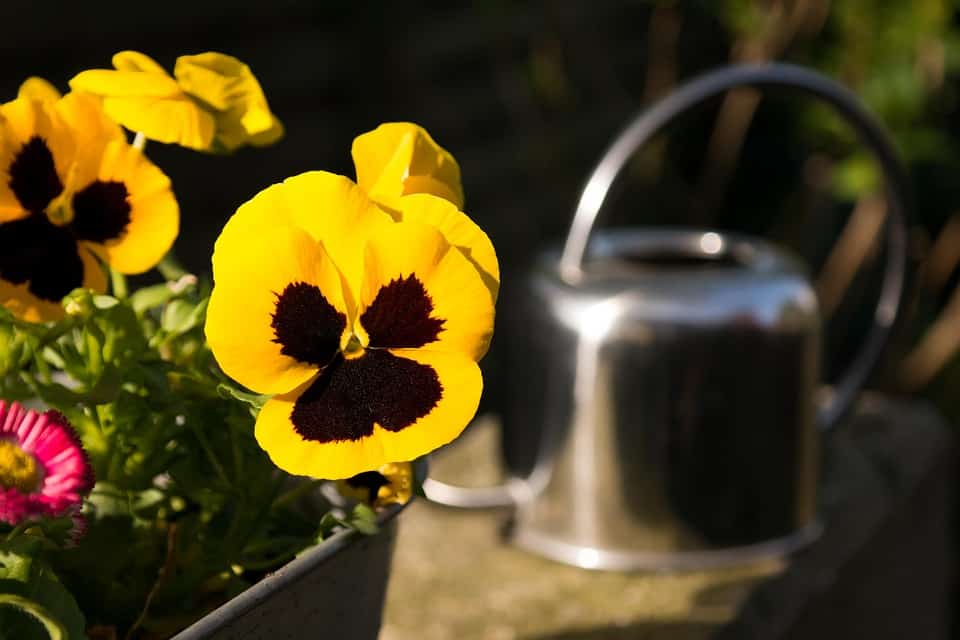
When you are nurturing pansies, you must make sure that the water supply they receive should be through an overhead technique. No matter if you’re watering them manually, through your trusty watering can, or an irrigation system, you must ensure the water is directly channeled to the soil.
Why? Well, pansies don’t like to take baths.
However, on a serious note, this method of watering helps to avoid fungal rot diseases. These are caused by standing water on flowers and leaves. Fungi spread through wind, water, and these pathogens can take root in the gathered water inside spaces in the plant, and can be harmful to your pansies.
Take Care of Your Pansies
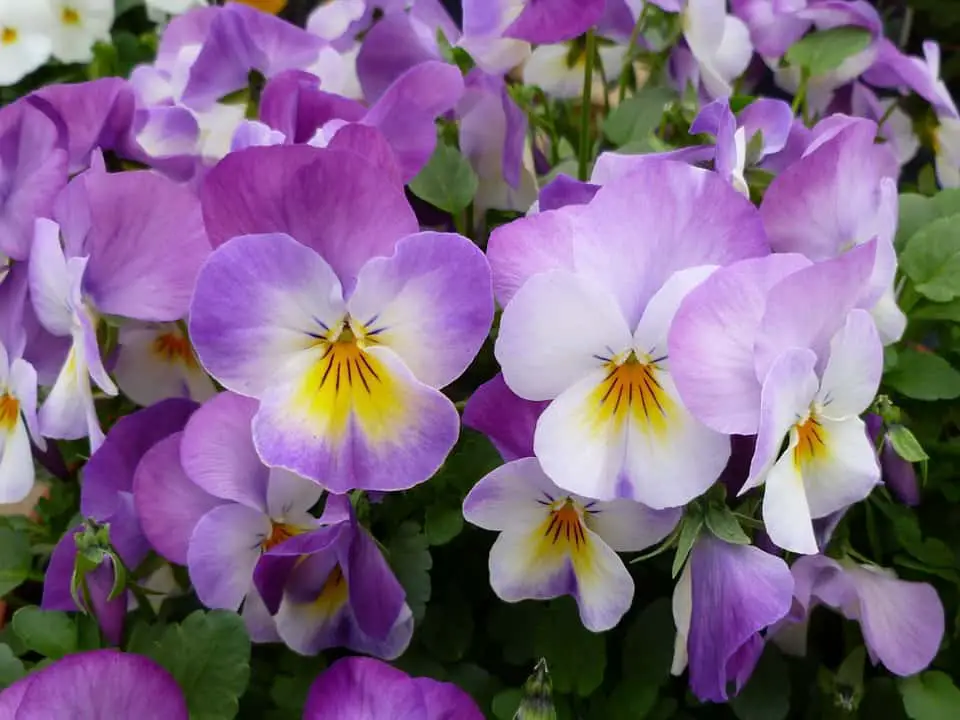
Pansies thrive in well-drained soil, not too dry or too soggy. They’re the Goldilocks of the garden patch! So you must be able to ensure that your pansies have moist and humus-rich soil. Let’s talk about the first part.
To ensure your soil is moist enough for your pansies, there is a simple way to check. Touch the soil and if your fingers are moist to the touch, your pansies are doing well. If it’s dry, you might need to water them.
You need to keep the soil moist at all times. If it dries out, it’s tough to get potting soil to absorb water again, and your pansies are likely to dehydrate rapidly. To prevent this, water them once or twice per day, depending on the weather. You’ll need to water them more often if the pot is placed in a sunny or windy location.
How to Take Care of Newly Planted Pansies
If you are transferring your pansies from one pot to another or your garden bed, you will need to take extra care. Newly planted pansies have to be watered generously and immediately after you plant them. The reason being that the transfer is strenuous to their roots. Watering them adequately will help them adapt easily and quickly to their new environment with all their plant friends.
Please note that you do not do this with the help of rainfall; it must be done by watering them yourself. Rain pour is harsh on the fragile roots and also washes away some of the upper layers of soil. So make sure the weather is not rainy when you plan to transfer your pansies.
And what about after you’ve transferred your pansies and it rains? Fear not! If it rains after you’ve transferred them, there is no need to worry. However, you will have to be mindful of their water content then. If the soil is wet after the rain, don’t water the plants until you feel it is a bit dry.
Do the touch test to know if you need to water them. Plants are creatures that absorb only as much water as they require, so no need to fret!
You should instead be concerned about waterlogging in your soil after rain. If the soil is too wet, look for a way to provide drainage. If you can’t do that, you can alternately add more soil, that’s dry, to the plant bed. You can also opt for adding compost.
After that, it is preferable to add a two to three-inch layer of organic mulch, such as pine needles, over the soil surrounding your pansies. Avoid pressing it directly against the plant. This will help absorb some of the water and prevent fungal spores from splashing onto your pansies.
But use it sparingly. Too much mulch can hold the excess moisture and cause more trouble rather than fix it.
Keep in mind your soil should be moist, not waterlogged. Not too much or too little, just right.
When to Water Pansies
Now let’s discuss when to water our precious pansies. Yes, when. Pansies are quite a handful! Even the timing of the watering is vital for this plant to thrive.
It is preferable to water your pansies in the morning. Avoid watering them at night or even in the evenings. The soil should be given enough time to dry, and hence to water them in the morning is the best option. The sun will dry the soil sufficiently throughout the course of the day.
In addition to this, it is essential to mention that you should keep your pansies outside. Pansies are outdoor plants; they need bright sunshine to create all those beautiful flowers. If you keep them inside for too long, they won’t flower because of not getting enough sunlight.
Help Your Pansies to Thrive
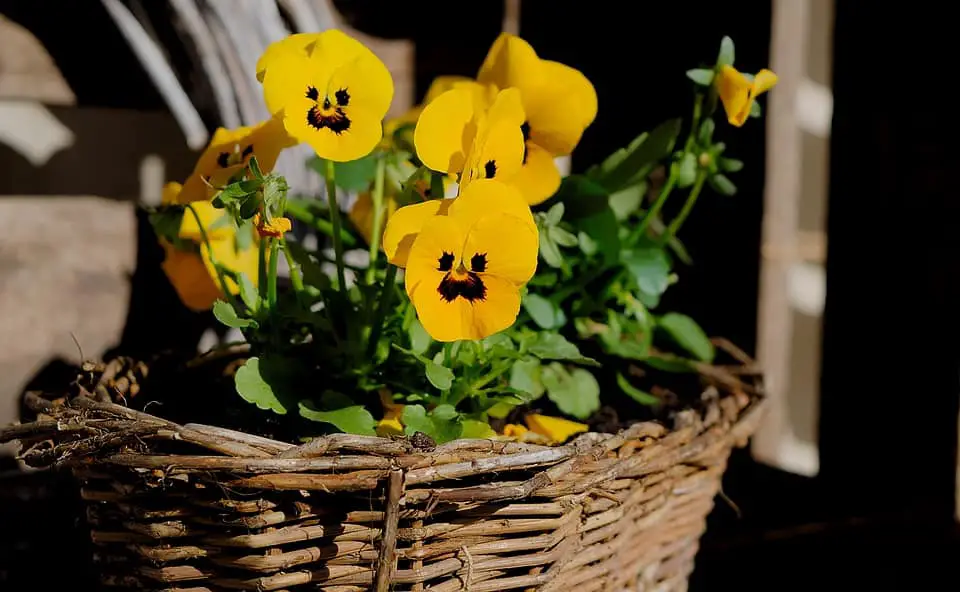
Fertilize your pansies regularly. The soil doesn’t have all the nutrients that your pansies need, and so we have to provide those nutrients through fertilizers. You can do this by watering once a week with fish emulsion or a little Miracle Grow™ or any other water-soluble fertilizer.
Fertilizing will help the pansies to grow healthy green leaves and produce lots of flowers! Just a little grooming tip: remove any spent flowers. Pansies can produce flowers for months, as long as you remove the flowers that have dried.
And what can you do when the flowering season has passed? You can still keep your pansies alive by watering the soil periodically; if conditions are right, they’ll bloom again in the fall. Your beloved pansies will be back to say hello again!
Just keep in mind that pansies will grow best when the weather is between 40 and 70 degrees. Once the weather becomes hot, the flowering will stop, and that is a normal process governed by temperature.
So enjoy them when the weather is cool and keep watering them when they’ve stopped blooming. They’ll revive again in the fall if done rightly!
That’s all you need to know about watering pansies.
Conclusion
We admit, taking care of pansies can be a hassle, but the beauty of the plant, we believe, is worth it! Watering is one of the most important details you need to know about them, and now that you’ve reached the end of this article, you are equipped with detailed knowledge to do just that.
We will also go on to mention that if you’re looking to grow pansies from scratch, please know that it’s a lot easier to buy an already grown plant from a local nursery rather than grow it from seeds yourself because pansies are delicate and require extra care.
You will need to keep track of the right amount of water added to aid in the germination and then the right amount of water for the tender stages of the plant when saplings begin sprouting, which can prove to be a challenge if you don’t have a green thumb or the time to devote to the plant.
Another plus point of getting it from the nursery is that you’ll get flowers blooming a lot more sooner too.
We hope this information serves you well in your pansy flowering expedition!
Again, as we mentioned earlier, ‘Not too much or too little, just right.’
Happy Gardening!

